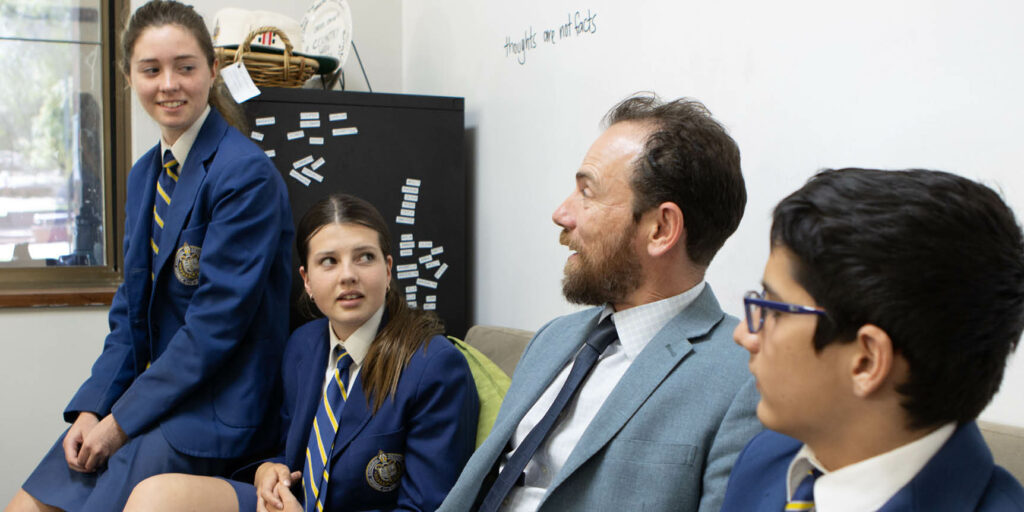Our aim is for our students to, not just survive school, but THRIVE at School.
When I ask parents what they most want for their children whilst they are at School, invariably similar responses are produced. Answers seldom have to do with academic achievement, sporting or musical prowess or pathways to certain careers. Most parents simply respond that they want their children to be happy. Some clarify by adding they want more than their children to be constantly filled with glee (that would be unrealistic and probably quite annoying) but instead to be confident, have healthy relationships and make meaning out of life.
We refer to this kind of happiness as Wellbeing. Our Model of Wellbeing borrows from Seligman’s (2010) PERMAH model to incorporate Positive Emotions, Engagement, Relationships, Meaning, Accomplishment and Health. Interestingly, Seligman didn’t include Accomplishment in earlier models but later came to realise that the academic, sporting, and cultural achievements mentioned earlier are also important to our Wellbeing.
In the Secondary School we strive to embed elements of Wellbeing in all that we do, in or beyond the classroom. We explicitly teach the elements of Wellbeing through Wellbeing and Health and Physical Education programs. We engage with organisations outside our community, like the Tomorrow Men and Women, Waratah, Red Frogs and Dr Yes, to help us in our journey.
One challenge of this work is that our young people have finely tuned hypocrisy detectors! If we expound the benefits of focusing on and working with our strengths and then make our halftime hockey talk a list of everything they did wrong, then they ain’t going to buy it! I used to wonder why, as a Psychologist, I would find it so hard to teach the skills of mindfulness to young people. Then it dawned on me that I was not doing it very well myself. I am guessing it was obvious to those I was trying to teach.
As staff, one of the most powerful ways we can support the Wellbeing of our young people is to ‘apply our own mask first’ and make sure we look after our own wellbeing. That way, wellbeing can be both ‘taught and caught’. This is a huge responsibility for our staff, especially within the context of the complex workings of a school day, term and year but it is one that we take seriously. I would argue that we are as much a wellbeing institution as we are an academic one!
There is a popular book titled Surviving Year 12 which I often borrow from when speaking with senior students. Problem is, I hate the title. ‘Surviving’ school cannot be our goal for our young people, we must do better than that. We share with parents the view that we want our young people thriving at School and we embrace the challenge to achieve it!
Mr Andrew Lincoln :: Deputy Head (Wellbeing)





